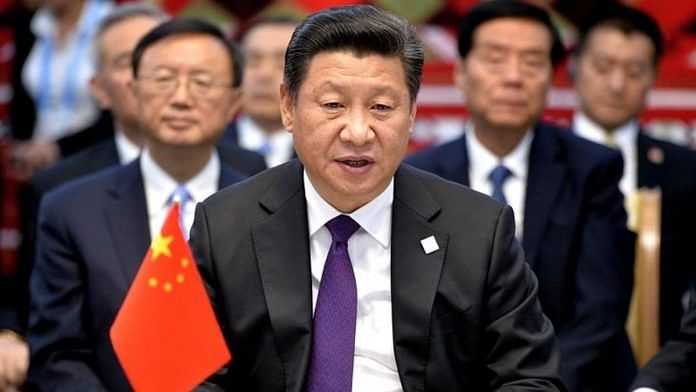China’s misadventure in Tawang seems to be yet another attempt to consolidate its position in the unsettled northern border. After Doklam in June 2017 and Galwan in June 2020, the skirmish at the Line of Actual Control in Yangtse area of Tawang sector where the PLA troops tried to transgress, is the third major face-off between the Indian and Chinese forces. The latest clash between two nuclear powers was a “physical scuffle,” not involving firearms.
The two sides used unsophisticated weapons such as iron rods, nail-spiked clubs, monkey fist and taser guns (an electroshock non-lethal weapon used to incapacitate foes). Although there have been injuries on both sides, it’s the Chinese who have suffered gravely. Defence minister Rajnath Singh told Parliament that no Indian soldier died or suffered any grievous harm and that ‘there are no fatalities or serious casualties on our side’.
The Chinese attempts to intrude into Indian areas in Yangtse in Tawang sector is not likely to be the last one, no matter how serious the casualty on their side. There could be continued attempts at some place or the other along the Arunachal Pradesh-Tibet border. What was North East Frontier Agency (NEFA) until 1972, Arunachal Pradesh, shares international borders with Tibet in north and northwest, Bhutan in west and Myanmar in east confirming its strategic locational advantage for India. Besides being an important religious center of Tibetan Buddhism, the Ganden Namgyal Lhatse monastery is the second largest after the one at Lhasa in Tibet. More importantly, Tawang is a strategic area in the corridor between Tibet and the Brahmaputra Valley. New Delhi cannot afford to lose even an inch of the land in this area.
Border intrusions such as the one last week will continue to happen and become a norm as Beijing is compelled to address its “territorial insecurity” before it finally decides to close the “border dispute.” As far as Chinese strategy is concerned, the so-called border issue with India can be treated as resolved only when the Line of Actual Control (LAC) is redrawn to its advantage. Beijing does not seem to prefer to settle the border issue by using major force or an armed conflict resulting in a full-scale war. Nevertheless, Beijing has fortified its positions, increased troop strength and improved infrastructure support in areas under its occupation.
Also read: Tawang skirmish shows LAC’s volatile. Army risking getting mired in Siachen-style resource trap
India needs to press the reset button
India’s strategy to deal with China needs to be reset to accommodate the present geopolitical and geo-economic realities. The statement by Pentagon press secretary Pat Ryder (We have seen People’s Republic of China continues to amass forces and build military infrastructure along so-called LAC) is a welcome one. The US’ concern over Chinese incursions seems to be oriented in its attempt to prop up New Delhi as a partner in its “containing China” project. In spite of the recent talks between Biden and Xi Jinping, the US-China confidence building measures have not progressed much. China continues to view the US as the biggest impediment in its expansionist and hegemonic strategies.
China opened a railway line in 2014 connecting Tibetan capital Lhasa to Shigatse (257 km west), which is north of Sikkim, with future plans to expand the railway network to the border between India and Nepal. Besides transporting mineral resources from Tibet, this railway link was of great strategic importance to China as it was aimed at promoting “the economic development of the Tibet Autonomous Region (TAR) and to strengthen national defence.”
As for India, while developing border infrastructure was the last item on the agenda of previous governments,the present government has finalised a massive rail-road infrastructure with a strategic outlook so that besides movement of people, the Army can reach the border easily and much faster. New Delhi needs to work at a much faster pace to complete the first stage of rail-road link and plan many more such links along the India-Tibet border.
The Border Peace and Tranquility Agreement of 1993 and other subsequent agreements to ensure peace have totally failed to achieve their expected outcomes. Except the fact that there has been no major armed conflict at the border, the Chinese strategy of nibbling at Indian villages and strategic outposts have not been abandoned. In such a situation, there is an urgent need to send a signal to Beijing that New Delhi would like to revisit the 1993 agreement and other confidence-building measures. It is not a coincidence that days before Xi Jinping’s visit to India in 2014,the PLA put up tents in Demchok, coming face to face with the Indian patrolling team. New Delhi needs to frustrate Beijing’s game of running with the hares and hunting with the hounds.
Though there are reports of massive protests in China, the domestic situation does not affect the strike capabilities of the PLA. India also needs to scale up the Army’s readiness and reduce deployment time.
As part of the psychological warfare, the Tibetan community in India and elsewhere should be given greater support in their efforts to move closer to the “free Tibet” dream. The dynamics of geopolitics is difficult to fathom, much less predict.
Seshadri Chari is the former editor of ‘Organiser’. He tweets @seshadrichari. Views are personal.
(Edited by Ratan Priya)






